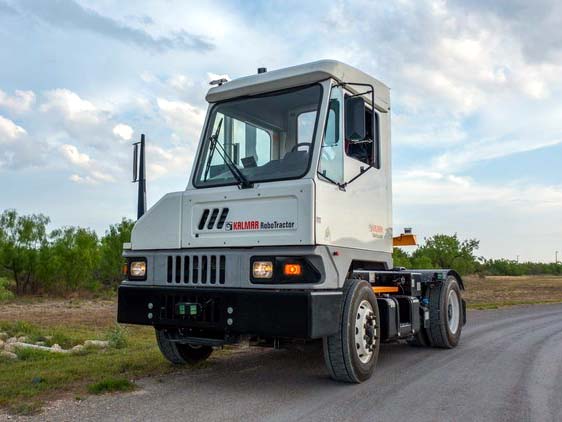
Based in Pasadena, California, COAST Autonomous develops self-driving vehicle systems that can transport people or goods, for urban, industrial or campus applications.
“We are a software and service company, not a manufacturer of vehicles,” said COAST Autonomous Robotics Engineer and Project Manager Amit Yashwantrao, speaking at the 2023 dSpace World Conference. “We use RTMaps to manage different sets of sensors and data fusion without changing the software stack, and we can integrate this on different vehicles with different form factors.” RTMaps by Intempora is a component-based development and execution software tool that allows users to fuse, time-stamp, record, synchronize and play back data from sensors and vehicle buses.

More efficient rail operations
One COAST Autonomous application involves railroad maintenance operations, where ground crews need to get from one part of a train to another. “These freight trains can be three to five miles long,” said Yashwantrao. “Until now, designated drivers had to be employed 24/7 to transport crew members around. In the case I’m describing, we needed to operate on rough, rail yard terrain, which is mostly gravel, so we decided to go with an off-road vehicle.”
Crews can summon the vehicle via radio from anywhere on the site. They can then use it to drive themselves where they need to go, and then the vehicle repositions itself autonomously, ready for the next mission. Speaking in June 2023, Yashwantrao said COAST has already signed two contracts with Class 1 railroads in the US for delivery of such vehicles. “Next quarter, we will deploy something like 100 to 120 vehicles at these sites,” he said.
In another rail industry application, a COAST-equipped autonomous vehicle drives crews that unload new cars from trains and then drive them to designated parking areas. Once they’ve parked the cars, they need to get back to the train “Before we came along, these drivers had to walk back to the train to get next batch of cars, which could involve 10 to 20 minutes of down time,” said Yashwantrao. “With our ‘meet me’ feature, crews can call the vehicle to anywhere on the site, and we also have a ‘COAST me’ feature, which is a follow-me application, so the autonomous vehicle just follows the crew members wherever they go as they unload the cars, using GPS tracking or optical tracking.”
Freight, inventory management, and people
COAST Autonomous is serving the freight sector with an intermodal yard truck that can handle a 53-foot trailer for container transport. “We have fully autonomous reverse driving and parking capabilities, and obstacle detection,” Yashwantrao said. “Other key features include fifth-wheel hitching and a robotic arm for the brake hook-up. This vehicle of course works with lots of different trailers on the site, so it wasn’t not feasible to put sensors on all those trailers. We decided instead to put everything, all of the sensors, on the tractor, and that was a big challenge.” COAST can put radio-frequency identification (RFID) readers and optical character recognition (OCR) systems on autonomous vehicles to provide real-time inventory management capabilities for containers and trailers.
The company has also developed its own passenger transport system for college campuses. “For our original shuttle concept, we are using a multi-level localization stack,” Yashwantrao said, “with no reliance on GPS, beacons or 3D maps, so this is a system that works very well both outdoors and indoors. Our business model is to provide software as a service [SaaS] on a monthly basis, and we should say that RTMaps is providing a good, essential framework for getting ISO 26262 certification.”

